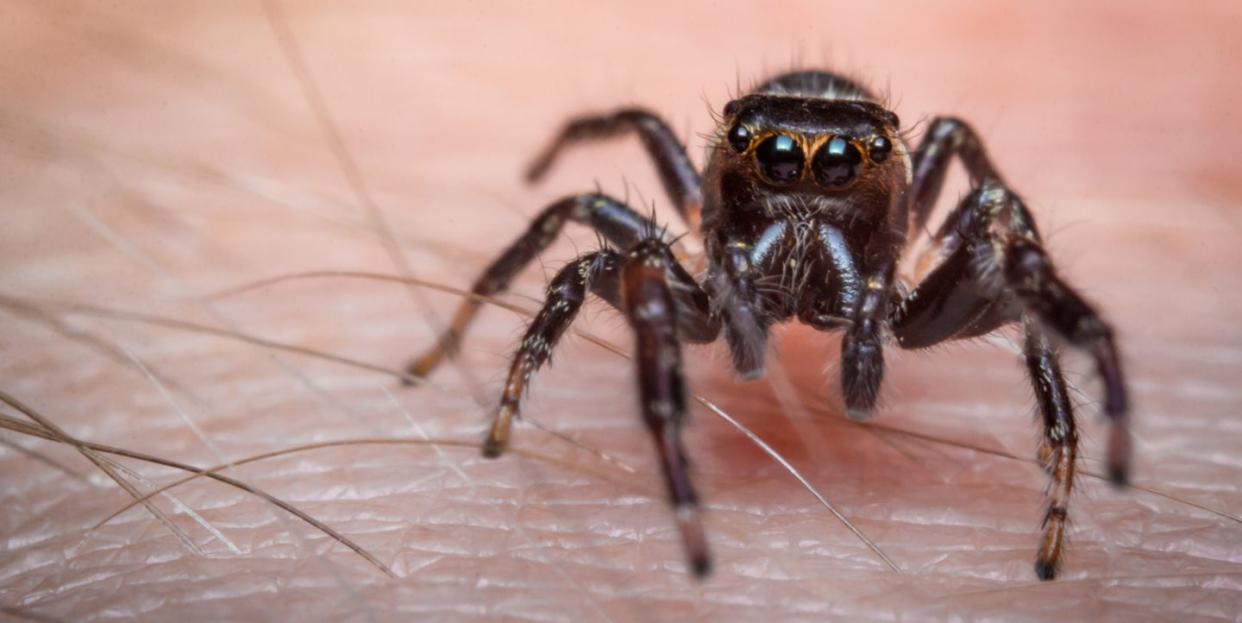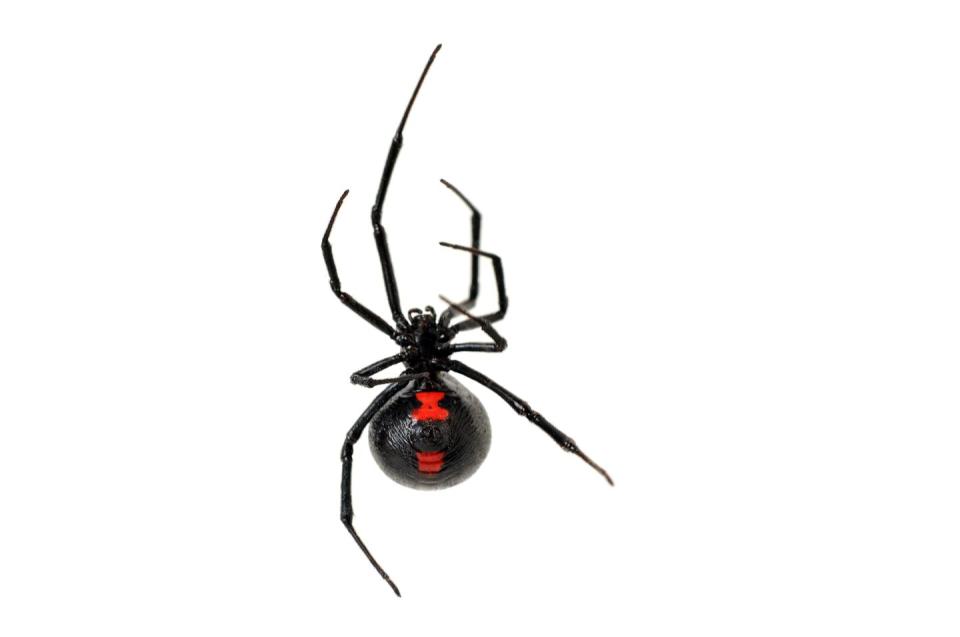Doctors Explain the Exact Steps You Should Take After a Nasty Spider Bite

Getting bitten by an eight-legged creepy crawler isn’t high on anyone’s to-do list. But, while spider bites aren’t as common as people think, they can and do happen.
Your first step: Don’t panic. With the exception of the brown recluse and black widow, most spiders in the U.S. won’t do much harm at all. A bite from a less intense species—say a wolf spider or jumping spider—will likely cause a red bump that may be a little sore or even painful, says Gary Goldenberg, MD, assistant clinical professor of dermatology at the Icahn School of Medicine at Mount Sinai Hospital. In most cases, you’ll be just fine.
Still, there are a few things you can do to ensure the area heals up quickly and without any problems. We consulted doctors for tips on what to do in the immediate aftermath of a spider bite—and how to make it better ASAP.
Back up: What does a spider bite look like?
In a perfect world, you wouldn’t be bitten by a spider in the first place. Spiders usually only bite people when they feel threatened, so doing your best to avoid the creatures and checking objects that are in spider-friendly places—like your garage, attic, and closets—before you use them can go a long way toward preventing bites.
If you do receive a bite, it can be hard to know for sure (even for pros) if a spider was the culprit—unless you found it on you, says Nancy Troyano, PhD, a board-certified medical entomologist with Ehrlich Pest Control.
But there is one telltale identifier: Since spiders have two fangs, you may see two tiny puncture holes in the center of your bite, says Howard Russell, MS, an entomologist at Michigan State University.
Redness and swelling around the bite site, mild pain (similar to a bee sting), and possible itching may also develop, depending on how you personally react to the bite. (Check out these spider bite pictures for visual examples.)
How can you tell if a spider bite is dangerous?
There are two spiders in the U.S. that cause more intense reactions: the brown recluse and black widow.

Brown recluse bites
The brown recluse has a very recognizable, violin-shaped marking along its torso and is known for its six (rather than eight) eyes. They’re a common house spider, and prefer to hang out in dark, undisturbed corners—say, a closet, basement, or shed. A brown recluse spider bite is extremely painful and can cause necrotic wounds or lesions (due to its hemotoxic venom) that may end up needing surgical repair, says Troyano. Look for a white or discolored blister and other body-wide symptoms, like muscle aches or a fever.

Black widow bites
The black widow has a jet black coloring and a red hourglass-shaped marking on its abdomen. You can also find it around the home, especially in garages, workplaces with lots of debris, and areas with corners or edges to build webs. While rare, a black widow bite can also be “extremely dangerous,” says Troyano. Watch out for two obvious puncture marks, redness, swelling, and a burning feeling around the bite site. The neurotoxic venom can also cause muscle spasms, nausea, vomiting, sweating, tremors, and weakness.
🚨 If you suspect you’ve been bitten by a brown recluse or black widow spider, seek immediate medical attention.
How to treat a spider bite
If you’re unlucky enough to get a spider bite, there are a few things you can do to treat it at home if you suspect a relatively harmless spider was the offender.
1. Wash the wound.
Insects are dirty, and you don’t know where that spider’s mouth has been. But washing with soap and water is just good wound care to prevent infection, no matter what kind of bite or cut you get, says Nicholas Kman, MD, an emergency medicine physician at The Ohio State University Wexner Medical Center. So, work up a good lather, rub it onto the wound, rinse it, and pat the area dry.
2. Grab some ice.
A spider may inject a little bit of venom into you when it bites, and the toxin can be inactivated by ice, says Dr. Kman. You can either make an ice bag and hold it over the bite for 10 minutes or so, or put a cube directly on the bite wound itself.
3. Take an anti-inflammatory medication.
If the area is uncomfortable or seems to be swelling a little, taking an anti-inflammatory like ibuprofen can help, Dr. Kman says.
4. Apply an antibiotic ointment.
Again, insects = dirty. Not only that, having any kind of wound increases your risk of developing a skin infection. That’s why Dr. Goldenberg recommends using an antibiotic cream on the wound like bacitracin, which you can find in an OTC option like Neosporin. You’ll want to continue to apply it twice daily until the bump goes away.
5. Take an antihistamine, if needed.
Many times, a spider bite will cause your body to release histamines, which causes swelling and itching. If you notice that your bite is itchy and swollen, Dr. Kman recommends taking an antihistamine like Benadryl or Zyrtec to combat the reaction.
6. Get a tetanus shot.
Being bitten by a spider means you should get a tetanus booster, which helps prevent infections—just in case, Dr. Kman says. You don’t need to sprint to the nearest ER, but you do want to put it on your immediate to-do list.
How long does it take for a spider bite to heal?
Expect harmless bites to go away within a couple of days, says Troyano, as long as it does not show any signs of infection, like excessive swelling and feeling hot to the touch.
If you get bitten by a brown recluse or black widow, it may take weeks (sometimes months if serious) to properly heal, which depends on the severity of the bite or if an infection follows.
When to see a doctor for your spider bite
Most spider bites don’t get infected, Dr. Kman says. However, if you notice redness, warmth, swelling that won’t quit, or drainage or pus from the wound, see a doctor as soon as you can. That’s also true if the area becomes tender, you have a breakdown of your skin, or it develops a hard, black crust, Dr. Goldenberg adds.
Again, in most cases of a spider bite, you’ll be just fine to wash the area well, ice it, and use OTC medication as needed—but don’t hesitate to call your doctor if you develop more issues or if you have any questions.
Like what you just read? You’ll love our magazine! Go here to subscribe. Don’t miss a thing by downloading Apple News here and following Prevention. Oh, and we’re on Instagram too.
You Might Also Like

